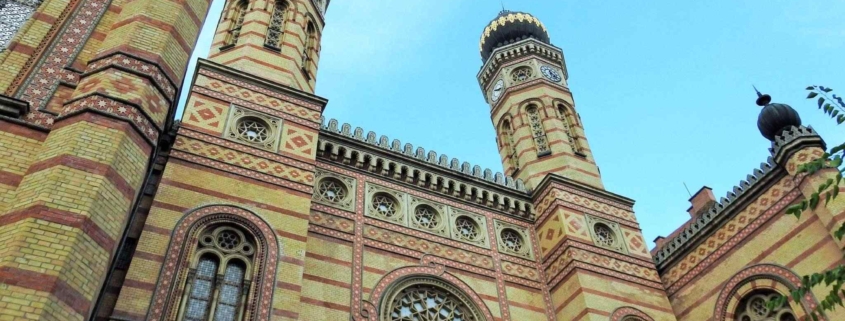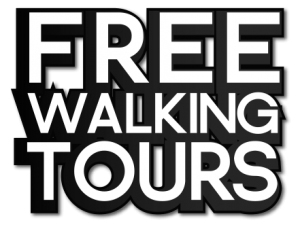This synagogue was built in 1912-13, designed by the Löffler brothers in secessionist architectural style. It is not only a temple but a whole complex for the Orthodox community: there is a kindergarten, a Talmud school, a butcher, huppah or chuppah (wedding tent) and a ritual bath or mikveh (the only one in Hungary) a little bit further down the Kazinczy street. The latter was renovated in 2004 in a very interesting way. It happened under the guidance of a Hasidic plumber from New York, who worked on the renovation from Sundays to Thursdays, then he flew home to spend Sabbath with his family. The ritual bath’s water partly comes from a well which was purified with 1000 liters of red wine.
The Kazinczy street synagogue belongs to the Orthodox community which is one of the 3 biggest Jewish communities of Budapest. Since the beginning of the Hungarian history in Europe, since the end of the 9th century, there has been Jewish people living amongst the Hungarians. In the 1800s the Jewish community reached a point when they got separated into 3 communities. In 1868 there was a congress and the Neolog, the Orthodox and the Status quo ante groups were born. Shortly the Orthodox community is the one that takes the rules of the religion the most seriously; the Neolog is the one that wanted to reform the ancient rules and traditions and assimilated to the Hungarians; and the Status quo ante is the group that wanted everything to stay as it was before, they are the so to say neutral community.
This synagogue together with the Dohány Street Grand synagogue can be visited by the public. The interior of this building is magnificent, just like the interior of the Grand synagogue. You can find a lot of tulips in the decoration which are specific to Hungarian secession and Hungarian folk art as well. There are some main differences inside compared to the Neolog Dohány street synagogue, since the interior of the Kazinczy street Orthodox synagogue follows the ancient rules of Judaism. A few examples: the Torah- reading pulpit is in the middle of the space, men and women sit on separated floors and there are no musical instruments unlike in the Dohány street synagogue (it has an organ inside). In 1944-45 it was inside the Jewish ghetto of Budapest and it was damaged during the liberation of the city, but was renovated after 1945.



